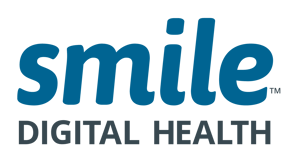How Smile’s digital Quality Measures (dQM) Solution Is Leading the Way for Quality Measures Evaluations
One of the biggest technical problems that quality measures programs face is the inability to compare quality measure results from different care providers. This is mostly because data sources from these care providers are not standardized and may be incomplete. This makes it challenging to distinguish and reward those organizations that are truly providing high-quality care from those that are not. The variability in manual human interpretation of information and records, compounds the inconsistency in data sources and formats.
Quality and interoperability of health data that is exchanged between providers and clinicians is essential for providing high quality of care, while minimizing unnecessary costs. To address the issue of inconsistent and variable data, a systematic alignment of health data infrastructure is required. This can significantly improve how quality measures are interpreted, executed and reported.
Smile Digital Health's (Smile) dQM (digital Quality Measures) solution is the gold standard for executing digital quality measures and quality reporting. It starts with systematically aligning or normalizing quality measures reporting with CQL (Clinical Quality Language) and FHIR® (Fast Health Interoperability Resources). Let’s delve into the how and why!
FHIR & CQL: A Brief Overview
For those who may be unfamiliar, FHIR is an open data standard developed by HL7® (Health Level Seven International), a not-for-profit standards development organization. It was designed to provide a modern, web-based, API-centric approach to data exchange that modernizes health data exchange through standards.
FHIR has earned a reputation as a modern standard across the healthcare ecosystem, as it uses the latest web standards (JSON and HTTP) to help modernize data transformation. This is why organizations like the CMS, ONC, and NCQA have adopted FHIR to support standardization of health data transformation.
CQL - Technical Overview
If CQL and how it relates to quality improvement is new for you, here are some technicals that you need to know to make informed decisions for your organization’s technology solutions.
CQL is a standardized authoring language, also developed by HL7, designed to enhance the expressiveness and human readability of electronic Clinical Quality Measures (eCQMs) and Clinical Decision Support (CDS) content that is executable by a machine. CQL facilitates harmonization of the standards used to represent eCQMs and CDS so that logic, value sets, libraries, and artifacts can be shared between the authored eCQM and CDS content and can be leveraged and aligned to support Continuous Quality Improvement (CQI). Notably, as of the 2019 implementation of eCQMs, CQL serves as the expression logic for the Health Quality Measure Format (HQMF). It replaced the logic expression capabilities previously provided by the Quality Data Model (QDM).
CQL is more modular, flexible, and robust, enabling the seamless sharing of logic that extends beyond eCQMs and CDS to support a broad range of use cases across the healthcare industry, including dQMs, computable clinical practice guidelines (CPGs), and public health reporting. CQL is a declarative language that describes the desired outcome rather than how to achieve it. As well, being an expressive clinical language that can define criteria for quality measures, it is well suited to reduce manual abstraction errors while evaluating quality measures.
FHIR and CQL are both extensible, and because of this are ready to support new clinical concepts as they are developed.
How FHIR and CQL Elevate Quality Measure Evaluations
Integrating FHIR and CQL brings significant advantages to quality measure evaluations in healthcare. Together, they eliminate systemic inconsistencies by providing semantic accuracy, measure reusability and system interoperability. FHIR resources are the foundational data elements for quality measurement, providing a standardized representation of clinical data. CQL, in turn, enables the expression of complex logic and criteria using these FHIR resources. This integration allows quality measures to be directly applied to FHIR data, enhancing the efficiency and accuracy of measure evaluations.
For EHR and quality measure vendors like those in the Qualified Registry (QR) and Qualified Clinical Data Registry (QCDR), there are significant benefits to adopting FHIR and CQL to perform quality measure reporting.
Benefits of using FHIR and CQL together for quality measure evaluations include:
-
Interoperability - FHIR's resource-based model facilitates seamless data exchange between different healthcare systems. With standardized data representation, quality measures can be applied consistently across diverse sources, ensuring interoperability and encouraging data sharing for quality evaluation purposes.
-
Reusability - CQL's modular and structured approach to clinical logic enables the reuse of logic components between different measures and clinical decision support systems. This modularity streamlines the development process and promotes efficient sharing and maintenance of clinical logic.
-
Accuracy - CQL's precise and expressive syntax enables authors to create sophisticated logic for quality measures accurately. This ensures that measure evaluations align closely with quality measures, clinical guidelines, and decision-making processes.
-
Adaptability - FHIR and CQL are designed to adapt to evolving healthcare standards and requirements. This adaptability future-proofs quality measure evaluations, allowing healthcare organizations to comply with changing regulations and guidelines.
-
Standardization - Using FHIR and CQL promotes standardized measure reporting across the healthcare industry. This consistency in reporting simplifies data aggregation and comparisons, enabling organizations to benchmark their performance effectively.
-
Broad applicability - Integrating FHIR and CQL extends beyond quality measure evaluations to support CDS, CPG, prior authorization and other essential functions that involve the patient. This broad applicability harmonizes how healthcare systems function, which is critical to improving patient care and outcomes.
As an HL7 standard for expressing clinical quality measures and enabling clinical decision support, CQL enhances the measurement of care quality and clinical decisions and paves the way for generalized use in healthcare, enabling continuous clinical care improvement that leads to better patient outcomes. Coupled with the FHIR open standard, the combination of FHIR and CQL has tremendous potential to revolutionize healthcare. The Smile dQM solution leverages open standards and the latest technology to set the stage for better quality care management at your organization!


